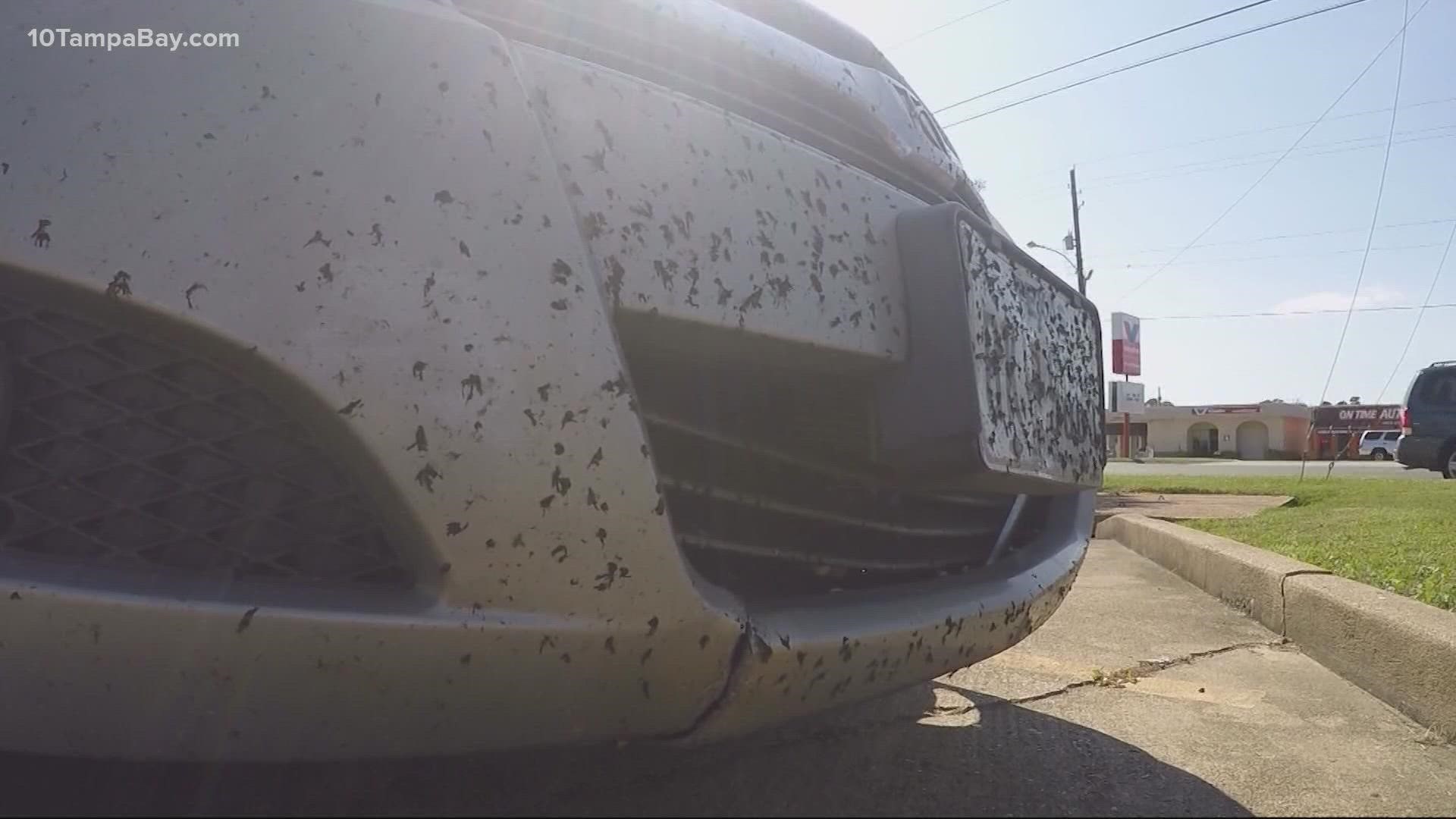ST. PETERSBURG, Fla. — You might notice the small black flies with a red dot that swarm in pairs becoming more prevalent in the Tampa Bay area — yes, it's lovebug season.
The species is formally called the Plecia nearctica Hardy, but lovebug for simpler reasons gets its name from their in-flight mating. They're a nuisance pest, and while they're not destructive or dangerous, they can become annoying when they accumulate in large numbers.
These pesky insects aren't all that bad, but they're pretty unavoidable if you live along the Gulf Coast. Male-female pairs are abundantly common every April through May in Florida. Stick with us while we break down some myths and facts about the seasonal insect that flies in pairs.
Some common myths about lovebugs include that they originated from a science experiment at the University of Florida, they're only in Florida, they eat mosquitos and they have no natural predators, among a list of many.
Myth: Lovebugs are only in Florida.
Fact: Lovebugs are actually common across the Gulf states — Texas, Louisiana, Mississippi, Alabama and Florida, according to a study by the University of Florida, IFAS Extension. They've also been spotted in Georgia and South Carolina. It's possible that their movement is caused by prevailing winds, traffic, sod transport, expansion of pastures, but not because of a UF research experiment.
Myth: Lovebugs are attracted to cars.
Fact: Lovebugs are not attracted to your cars, but they are attracted to what your car puts out – the exhaust. They're also attracted to heat. According to IFAS, they fly between 1-5 feet from the ground during warm periods of the day, usually between 10 a.m. to 6 p.m., so yes, they might show up on your car or splat on your windshield.
RELATED: No, COVID didn’t ‘kill off’ lovebugs but here’s some reasons why you’ve noticed fewer lately
Myth: Lovebugs eat mosquitos.
Fact: Lovebugs are herbivorous insects that consume pollen and nectar found in flowers, IFAS said. Without jaws, grasping legs, or speed, they would not be the insect we call for a mosquito feast.
Myth: Lovebugs mate the entire time they're coupled.
Fact: As male lovebugs form swarms above emergence areas (areas where there is little to no wind and vegetation), the female lovebugs may join the swarm before they are grasped by a male lovebug. Sperm transfer requires an average of 12.5 hours, IFAS says, but the two can be coupled for days before parting ways.
Myth: Insecticides work to kill lovebugs.
Fact: Any insecticide can be found to kill the average house pest like flies, mosquitos and other flies will also kill lovebugs, but researchers say there are risks associated with the use of insecticides. Oftentimes, "other insects are often misidentified as being lovebugs, some of which are innocuous or beneficial, and therefore, should not be killed." The experts say it's just best to avoid lovebugs during their very short appearances each year.
Did you know that male lovebugs live for two to five days and females live for up to seven? In their short lifespan, adult lovebugs live long enough to mate, feed, disperse and lay a batch of eggs.

